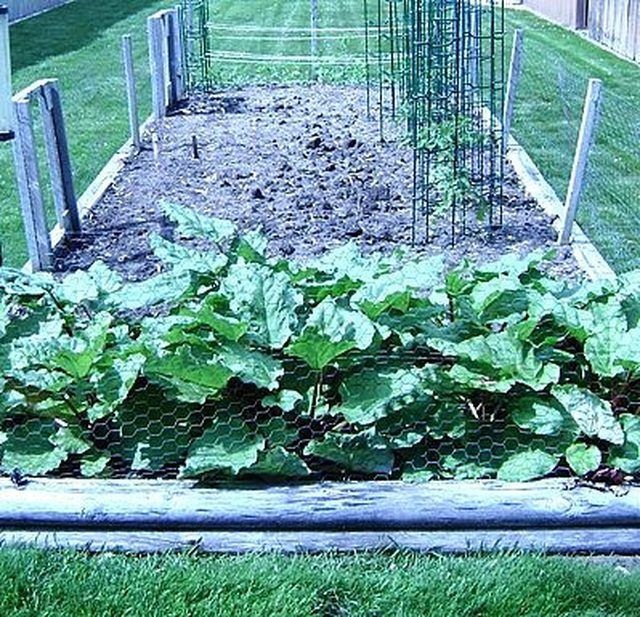Bulbs
Flower Basics
Flower Beds & Specialty Gardens
Flower Garden
Garden Furniture
Garden Gnomes
Garden Seeds
Garden Sheds
Garden Statues
Garden Tools & Supplies
Gardening Basics
Green & Organic
Groundcovers & Vines
Growing Annuals
Growing Basil
Growing Beans
Growing Berries
Growing Blueberries
Growing Cactus
Growing Corn
Growing Cotton
Growing Edibles
Growing Flowers
Growing Garlic
Growing Grapes
Growing Grass
Growing Herbs
Growing Jasmine
Growing Mint
Growing Mushrooms
Orchids
Growing Peanuts
Growing Perennials
Growing Plants
Growing Rosemary
Growing Roses
Growing Strawberries
Growing Sunflowers
Growing Thyme
Growing Tomatoes
Growing Tulips
Growing Vegetables
Herb Basics
Herb Garden
Indoor Growing
Landscaping Basics
Landscaping Patios
Landscaping Plants
Landscaping Shrubs
Landscaping Trees
Landscaping Walks & Pathways
Lawn Basics
Lawn Maintenance
Lawn Mowers
Lawn Ornaments
Lawn Planting
Lawn Tools
Outdoor Growing
Overall Landscape Planning
Pests, Weeds & Problems
Plant Basics
Rock Garden
Rose Garden
Shrubs
Soil
Specialty Gardens
Trees
Vegetable Garden
Yard Maintenance
How to Make Natural Bug and Worm Repellents for Your Tomato Plants
How to Make Natural Bug and Worm Repellents for Your Tomato Plants. Natural bug and worm repellents for tomato plants are growing in popularity as people become more aware of the toxins in traditional products. Nothing is more discouraging than to go out to your garden and find those big green hornworms munching away on your beautiful tomatoes!...

Natural bug and worm repellents for tomato plants are growing in popularity as people become more aware of the toxins in traditional products. Nothing is more discouraging than to go out to your garden and find those big green hornworms munching away on your beautiful tomatoes! The same goes for some of the primary pesky bugs like aphids, thrips, spider mites, whiteflies, and leafhoppers that devour the plant and leaves overnight or leave it looking half dead. There are probably things in your kitchen or bathroom right now that will work efficiently to make a natural repellent.
Things You'll Need
Garlic
Mild dish soap
Hydrogen peroxide
Baking Soda
Olive oil
Water
Sugar
Find out what is Bothering Your Tomato Plant
Look on the upper part of the plant, leaves and green fruit to see if there are large amounts consumed as the hornworm will devour all of this. This caterpillar looking green hornworm gets its name from the fact that it has a black horn on the head.
Aphids are little yellowish, rice shaped bugs that multiply quickly and eat the tomato plant leaves but the main damage they cause is the transmission of plant viruses.
Thrips are brown little winged bugs that feed on the leaves as well and cause discoloration and damage to it. Spider mites are tiny, oval shaped, greenish yellow bugs that feed on the underside of the leaves and make webs on them causing discoloration and damage to them.
Whiteflies feed on the underside of leaves and drain the tomato plant of their life if there are enough of them. Leafhoppers are brownish colored bugs that can jump and hide very well and prefer to suck the sap out of the plant or eat the tomatoes.

Deal with the Hornworm
Dealing with the hornworm can be a challenge but there are some natural remedies that have worked quite well and can be made very inexpensively. The main way many gardeners deal with the tomato worm is to simply remove them and do away with them or feed them to any available chickens.
Another effective way to repel them is to sprinkle cornstarch on and around the tomato plant as this will suffocate the worms. You can also sprinkle a natural powder product called diatomaceous earth on the plant and soil around it to repel these worms as well as other predators.

Make a Garlic Repellent
Garlic is a natural repellant that can be made by mixing one clove of crushed garlic with a quart of water and a dash of hot pepper sauce together and spraying on the plant to repel these pests.

Make a Dish Soap Repellent
Put 1 tablespoon of a mild liquid detergent into a spray bottle of water and spray the plants with it and watch it work effectively on a variety of bugs as well as being very safe.
Mix up a Hydrogen Peroxide Repellent
Mix 8 ounces of Hydrogen Peroxide, a gallon of water and 8 ounces of sugar together for a long lasting formula and spray on both sides of the tomato plant and leaves.

Use Baking Soda
Mix up 1 tablespoon of baking soda, ? teaspoon mild detergent and 2 ? tablespoons of olive oil in a gallon of water to make a repellent for all kinds of bugs as well as a fungicide for blight and mildew on the tomato plant leaves. Shake it well before spraying and repeat every week for it to be effective.

Apply Repellent at the Right Time
First test spray a small portion of the plant or leaf and wait overnight to see how it fares. Always spray your tomato plants early in the morning or the cool evening to avoid burning them or having a bad reaction because of the heat. Do not add more spray or increase the strength if you are not getting good results as this may harm the plant and drive away the good bugs that eat the predators. Experiment with different repellents to see which one works best for your plants.
Tips & Warnings
Always protect your eyes when dusting or spraying plants.